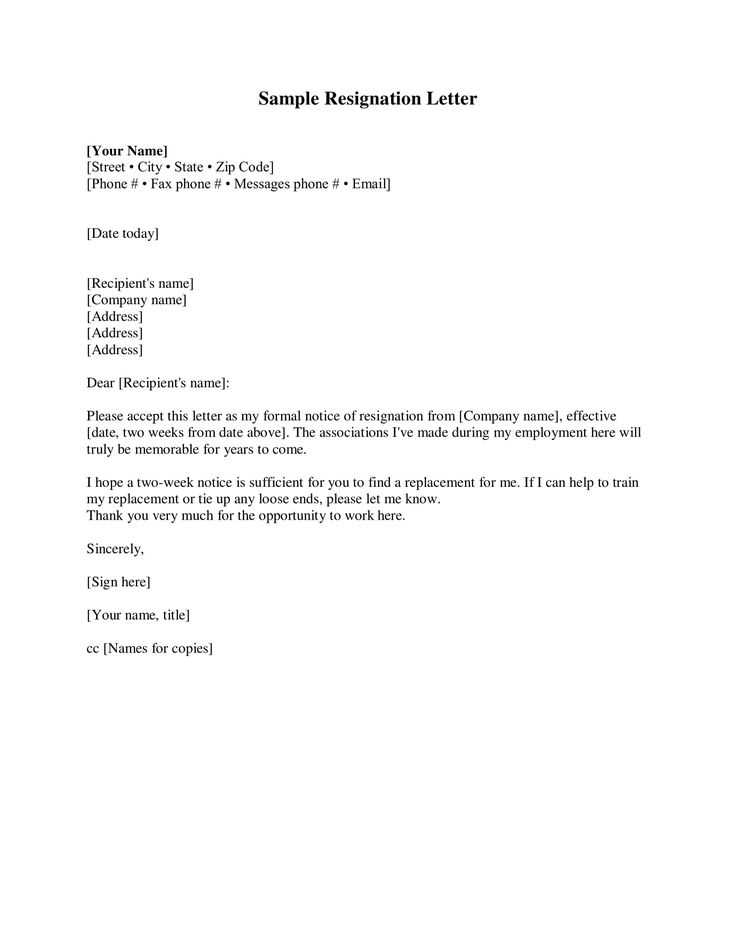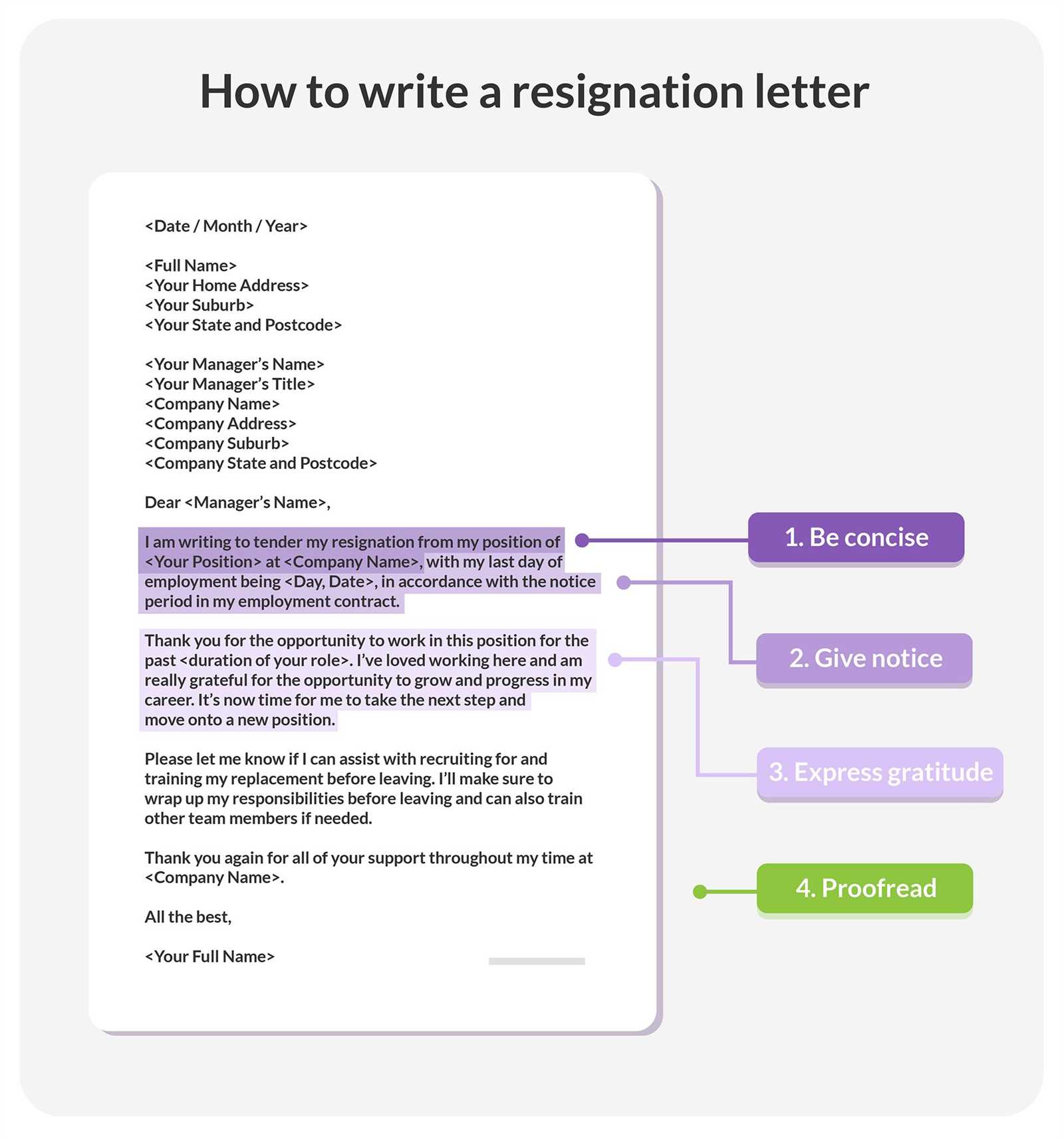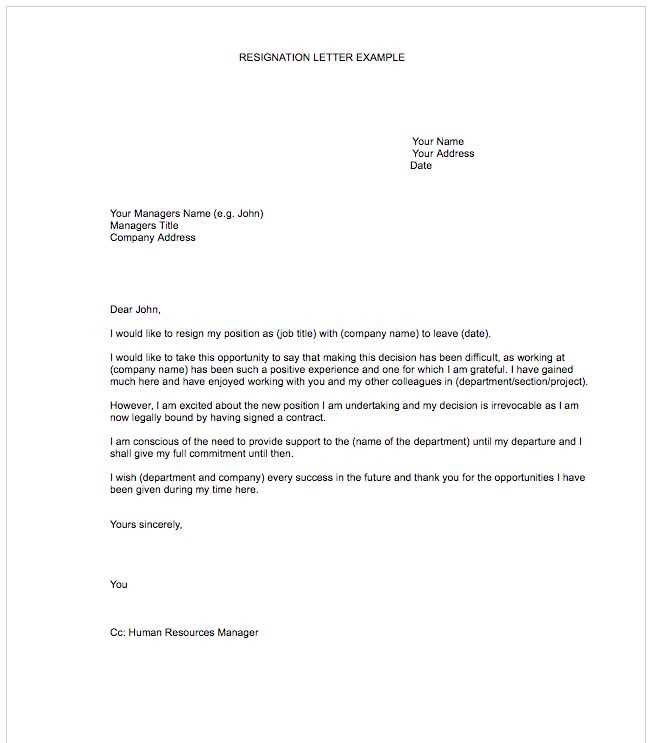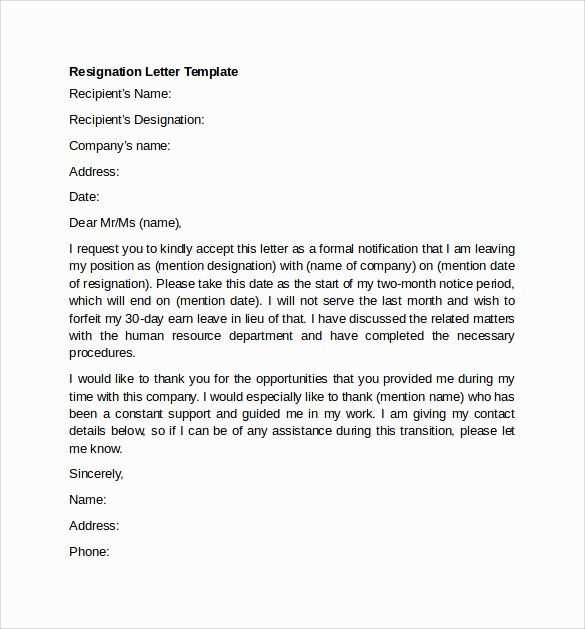Resign Letter Template for Employees in Malaysia

When you decide to leave your current employment, it’s important to communicate your intentions clearly and respectfully. Crafting a well-written formal notification can help ensure a smooth transition and maintain positive relationships with your employer and colleagues. This section offers useful advice on how to write a professional farewell statement and provides some tips on structure and key points to cover.
Essential Elements to Include in Your Formal Departure Notice

Every formal notification should have a few core elements to ensure clarity and professionalism. Here are some points to consider:
- Notice of Departure: Clearly state your intent to leave and provide the effective date.
- Reason for Leaving: If comfortable, briefly mention the reason for your decision.
- Appreciation: Express gratitude for the opportunities and experiences gained during your time at the organization.
- Transition Assistance: Offer help with the transition process, such as training a replacement or finishing outstanding tasks.
How to Structure Your Departure Statement

The layout of your formal statement should be clear and concise. Follow these guidelines for an organized format:
- Start with a formal salutation.
- State your intention to leave and the effective date.
- Express your gratitude and offer to help with the transition.
- Close with a professional sign-off.
Key Mistakes to Avoid
When drafting your departure notification, steer clear of common missteps that could damage your reputation. Here are a few mistakes to watch out for:
- Too much detail: Avoid over-explaining your reasons for leaving or discussing personal issues.
- Negativity: Refrain from venting about any negative experiences or frustrations with the company.
- Overly casual tone: Keep your communication respectful and formal, even if you have a friendly relationship with your employer.
Examples of Formal Farewell Notices

Here are a few examples of how your resignation message might look, depending on the circumstances:
- Standard Notice: “I am writing to inform you of my decision to resign from my position as [Job Title], effective [Date]. I have greatly appreciated the opportunity to work with you and the team.”
- Short and Professional: “Please accept this as formal notice of my resignation, effective [Date]. Thank you for the support during my time at [Company Name].”
- Appreciative and Offer to Assist: “I am resigning from my role as [Job Title] effective [Date]. I am grateful for the experiences gained here and would be happy to assist in the transition during my notice period.”
Crafting a Professional Departure Notice
When choosing to leave your current role, it’s essential to communicate your decision in a formal, respectful manner. This section will guide you through creating a structured notification, highlighting the critical aspects to include, and offering tips to ensure professionalism throughout the process.
How to Structure Your Departure Notification
The layout of your notice plays a key role in ensuring clarity and professionalism. Begin with a formal introduction, followed by a direct statement of your intent to leave, and end with a closing remark expressing gratitude. Maintain a respectful and formal tone throughout the message to foster positive communication with your employer.
Key Components to Include in the Document
Make sure to cover the following essential elements to ensure that your message is complete:
- Effective Date: Clearly state when your departure will take place.
- Gratitude: Acknowledge the opportunities provided by the organization.
- Offer to Assist: Mention your willingness to help with the transition process.
Common Errors to Avoid During Resignation
Avoid these common mistakes to maintain professionalism and avoid misunderstandings:
- Over-explaining: Keep the reason for your departure brief and neutral.
- Negative Remarks: Avoid criticizing the company or colleagues.
- Informal Language: Stick to a formal, respectful tone throughout the document.
Best Approaches for Writing a Formal Notice
To ensure your message is well-received, be concise and polite. Start with a clear statement of your intent to leave, express gratitude for the time spent with the organization, and offer to assist with the transition. Always use formal language and structure.
Tips for Maintaining Professionalism in Your Message
Even if you’re leaving due to negative circumstances, it’s important to maintain professionalism in your message. Keep it respectful, and avoid airing grievances. Focus on the positive aspects of your experience and express appreciation for your time at the organization.
Departure Notice Samples for Workers in the Region
Below are examples of well-structured notifications that employees can use as reference when drafting their own messages:
- Example 1: “I am writing to formally notify you of my decision to resign from my position, effective [Date]. I am grateful for the support and opportunities provided during my tenure.”
- Example 2: “Please accept this as formal notice of my resignation, with my last working day being [Date]. I appreciate the chance to contribute to the company and wish you all the best moving forward.”
- Example 3: “It is with mixed emotions that I submit my resignation from my role, effective [Date]. I am thankful for the experience and look forward to assisting in the transition process.”